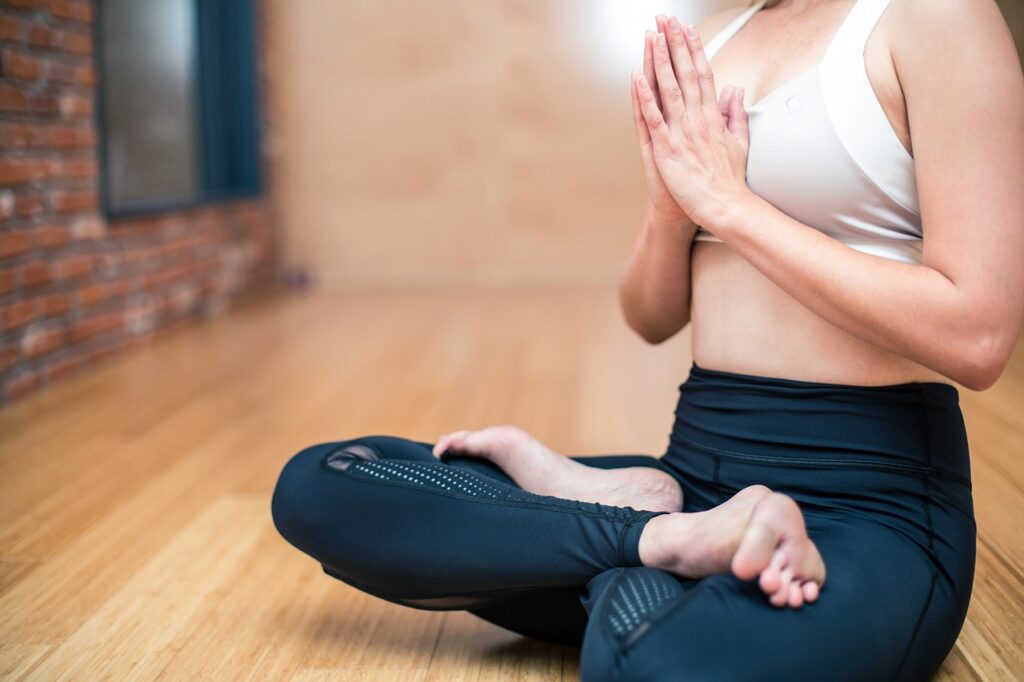As the seasons change, so too does the energy that surrounds us. This subtle shift in nature’s rhythm can have a significant impact on our yoga practice. The changing seasons offer an opportunity for us to tune in and harmonize with the natural flow of life, adapting our routine to align with the energy of each season. By understanding how the seasons affect our bodies and minds, we can make small adjustments to our yoga practice that will enhance our overall well-being and deepen our connection with ourselves and nature.
Seasonal Changes in Yoga Practice
Yoga is a beautiful practice that allows us to connect with our bodies, minds, and the world around us. As the seasons change, it is important to understand how these shifts in nature impact our yoga practice. By adapting our practice to the different seasons, we can enhance our overall well-being and deepen our connection with ourselves and the environment. In this article, we will explore the importance of understanding the impact of seasons on yoga and how we can adapt our practice accordingly.
Understanding the Impact of Seasons on Yoga
Nature is constantly in a state of flux, and we are part of this ever-changing cycle. Just as the seasons affect the plants and animals around us, they also influence our own bodies and minds. Each season brings its unique energy, and by aligning our yoga practice with the seasons, we can better attune ourselves to the natural rhythms of life.
Winter, spring, summer, and autumn each have their own qualities and characteristics that can significantly impact our yoga practice. By understanding these seasonal changes, we can modify our practice to support our physical, mental, and emotional well-being.
Adapting Yoga Practice to Different Seasons
As the seasons change, our bodies and minds require different types of support. Adapting our yoga practice allows us to meet these changing needs and maintain a harmonious balance within ourselves. Let’s explore the different ways we can tailor our yoga practice to each season.
Winter Yoga Practice
The winter season is characterized by cold temperatures and shorter days, which can leave us feeling sluggish and less motivated. During this time, it is crucial to focus on warming up the body and cultivating internal heat.
Importance of Warming Up the Body
In winter, our muscles and joints tend to be stiffer due to the cold weather. It is essential to prioritize warming up the body before diving into a deeper yoga practice. This can be done through gentle stretches, joint mobilization exercises, and a gradual progression into more dynamic movements.
Gentle and Slow Movements
During winter, it is advisable to opt for gentle and slow movements that help to nurture and nourish the body. Slowing down the pace allows us to focus on the sensations within, promoting relaxation and a deeper connection with ourselves. Restorative and yin yoga practices can be especially beneficial during this season, as they encourage relaxation and stress relief.
Emphasizing Grounding and Stability
With winter’s cold and chaotic energy, it is important to focus on grounding and stability during our yoga practice. Incorporating standing and balancing poses, such as tree pose and mountain pose, can help us feel rooted and anchored even in the face of external turbulence.
Incorporating Energizing Pranayama Techniques
To combat the winter blues and boost our energy levels, incorporating energizing pranayama techniques can be beneficial. Practices like Kapalabhati (skull-shining breath) and Bhastrika (bellows breath) can generate heat within the body and invigorate our senses, helping us stay energized and uplifted even during the darkest days of winter.

Spring Yoga Practice
Spring is a season of awakening and renewal, as nature comes back to life after the dormant winter months. During this time, our bodies and minds naturally crave movement and a sense of lightness.
Awakening and Renewal
Spring is an invitation for us to shed our winter layers and embrace a fresh start. During our yoga practice, it is important to align with the season’s energy of awakening and renewal. This can be achieved by incorporating poses that open up the front body, such as backbends and heart-opening postures, to invite in new energy and release any stagnation accumulated during the winter.
Dynamic and Flowing Sequences
To honor the dynamic and vibrant energy of spring, incorporating flowing and dynamic sequences can be immensely beneficial. Sun salutations and vinyasa flows can help us cultivate a sense of fluidity and grace, like the blooming flowers and flowing rivers of spring.
Creating Lightness and Flexibility
Spring’s energy is light, and our yoga practice can reflect this by focusing on creating a sense of lightness and flexibility within ourselves. Practicing inversions, arm balances, and poses that lengthen and release tension in the body, such as forward folds and gentle twists, can contribute to a feeling of lightness and freedom.
Breathing Exercises for Invigorating Energy
During spring, it is essential to invigorate our energy and awaken our senses. Incorporating breathing exercises, such as Kapalabhati (skull-shining breath) and Ujjayi (victorious breath), can help us connect with our breath, increase our vitality, and enhance our overall well-being.
Summer Yoga Practice
Summer is a season of warmth and abundance, but it can also bring with it intense heat and humidity. To maintain balance and optimize our well-being during this season, adjusting our yoga practice to manage the heat is essential.
Managing Heat and Humidity
The summer heat can be intense, and practicing yoga in overly hot conditions may lead to discomfort or even dehydration. It is crucial to prioritize safety and adjust our practice accordingly. Finding cooler and well-ventilated spaces for our practice, such as practicing near an open window or opting for air-conditioned studios, can make a significant difference in ensuring a comfortable and safe experience.
Cooling and Calming Asanas
To counteract the summer heat, incorporating cooling and calming asanas into our practice can be highly beneficial. Poses such as forward folds, seated twists, and gentle inversions can help release stored heat from the body and soothe the nervous system.
Focus on Relaxation and Surrender
Summer often brings a sense of expansion and abundance, but it can also be a time of busyness and high activity levels. To find balance, it is essential to focus on relaxation and surrender during our yoga practice. Restorative yoga, Yin yoga, and gentle flow sequences that emphasize longer holds and deep relaxation can help us soften into the present moment and release tension.
Practicing Cooling Pranayama Techniques
In addition to cooling asanas, incorporating pranayama techniques that have a cooling effect on the body can be beneficial during the summer months. Sheetali (cooling breath) and Sitali (the cooling breath) are two practices that involve inhaling through a rolled tongue or pursed lips, respectively, to draw in cool air and calm the body and mind.

Autumn Yoga Practice
Autumn is a season of transition and change, as nature prepares for the colder months ahead. It is a time for grounding ourselves and embracing the beauty of impermanence.
Grounding and Balancing
As the leaves fall and the temperatures begin to drop, grounding and balancing become essential elements of our yoga practice. Standing poses, such as Warrior II and Tree pose, can help us feel rooted and stable amidst the shifting energies of autumn.
Slow and Mindful Movements
Autumn encourages us to slow down and embrace the present moment. Slowing down our yoga practice and engaging in mindful movements allow us to fully experience the sensations within our bodies and minds. Practicing slower-paced flows and exploring longer holds can help cultivate mindfulness and deepen our connection with ourselves.
Embracing Change and Letting Go
Autumn is a season of transformation and letting go. Just as the trees release their leaves, we can use our yoga practice to release any thoughts, emotions, or physical tension that no longer serves us. Incorporating hip-opening poses, gentle twists, and forward folds can support us in this process of surrendering and creating space for new beginnings.
Breathing Techniques for Stability and Tranquility
Autumn can sometimes bring a sense of restlessness and change. Incorporating breathing techniques that promote stability and tranquility can be beneficial during this season. Nadi Shodhana (alternate nostril breathing) and Dirga (three-part breath) are breathing exercises that can help bring balance and calmness to our mind and body.
Adapting to Weather Conditions
As we engage in our yoga practice, it is important to adapt to the weather conditions around us. Whether we are practicing indoors or outdoors, certain adjustments can make our practice more enjoyable and safe.
Outdoor vs. Indoor Practice
Practicing yoga outdoors can be invigorating and allow us to connect with nature. However, it is crucial to consider the weather conditions and choose a safe and comfortable outdoor space. Extreme temperatures, rain, or excessive wind can hinder our practice and potentially pose risks to our well-being. Having a backup plan for indoor practice on days when conditions are unfavorable can ensure that we continue to prioritize our yoga practice.
Modifying Practice in Extreme Temperatures
In extreme hot or cold temperatures, it is important to modify our practice accordingly. In hot weather, practicing during the cooler parts of the day or opting for cooling asanas and pranayama techniques can help us stay comfortable and prevent overheating. In cold weather, keeping the body warm through layering clothing, incorporating more dynamic movements, and practicing in a heated space, if possible, can help prevent stiffness and discomfort.
Choosing the Right Clothing and Props
Selecting appropriate clothing and props is essential in creating a comfortable and safe yoga practice. During warmer months, breathable and moisture-wicking fabrics can help regulate body temperature and prevent excessive sweating. In colder months, layering clothing can provide insulation and allow for easy adjustment as the body warms up during the practice. Additionally, using props such as blankets, bolsters, or blocks can enhance our comfort and support as we navigate different weather conditions.

Listening to Your Body
One of the fundamental principles of yoga is listening to our bodies and honoring their needs. This principle becomes even more crucial as we navigate the changing seasons and adapt our practice to align with them.
Recognizing Individual Needs and Energy Levels
Each person is unique, and our bodies have different requirements. It is important to recognize our individual needs and energy levels as we engage in our yoga practice throughout the seasons. Some days, our bodies may feel energized and ready for more vigorous movements, while other days may call for gentler practices or even restorative yoga. Listening to our bodies and respecting their limits ensures that our yoga practice remains supportive and nourishing.
Honoring Physical and Emotional Well-being
Physical and emotional well-being go hand in hand. As we adapt our yoga practice to different seasons, it is essential to consider how we are feeling physically and emotionally. Some seasons may be more demanding on our energy levels, while others may require more attention to mental and emotional well-being. By honoring these aspects of our being and adjusting our practice accordingly, we can cultivate a holistic sense of well-being throughout the year.
Adjusting Intensity and Duration of Practice
Flexibility is a key component of a well-rounded yoga practice. As the seasons change, it is beneficial to adjust the intensity and duration of our practice to suit our needs. During summer, when the heat is high, shorter and gentler practices may be more appropriate. In winter, when our energy levels may be lower, longer and more nurturing practices can provide the support and warmth we need. By adapting the intensity and duration of our practice, we can ensure that it remains sustainable and nourishing.
Considering Environmental Factors
Our external environment plays a significant role in our overall well-being. By considering the environmental factors that affect us, we can create a yoga practice that is harmonious with our surroundings.
Effects of Seasonal Allergies
Seasonal allergies can impact our ability to fully enjoy our yoga practice. The changing seasons often bring about an increase in pollen, dust, and other allergens that can trigger allergic reactions. It is important to be mindful of any allergies we may have and take appropriate measures to alleviate symptoms during our yoga practice. Practicing in a clean and dust-free environment, maintaining good indoor air quality, and incorporating breathing techniques that promote clear breathing can help mitigate the effects of seasonal allergies.
Creating a Calming Environment
Our surroundings greatly influence our yoga practice. Creating a calming and peaceful environment can greatly enhance our overall experience. Whether practicing at home or in a studio, consider decluttering the space, incorporating soft lighting or candles, and playing soothing music to create a serene atmosphere that allows for deep relaxation and introspection.
Harmonizing with Nature’s Rhythms
Yoga is an opportunity to connect with nature and tap into its inherent wisdom. By aligning our practice with the natural rhythms of the seasons, we can deepen our connection with the world around us. Pay attention to the changes happening in nature and bring elements of the season into your practice. For instance, during summer, you can incorporate sun salutations or outdoor practices to embrace the warmth and light. In autumn, practice gratitude and reflection, mirroring the falling leaves and the earth’s shedding of its summer coat. By harmonizing with nature’s rhythms, we can find a sense of unity and balance within ourselves.
Balancing Routine and Adaptability
Maintaining consistency and adherence to a regular yoga practice is important. However, it is equally important to allow for flexibility and adaptability as the seasons change.
Maintaining Consistency and Discipline
Consistency and discipline form the foundation of a sustainable yoga practice. By committing to a regular practice, we cultivate self-discipline and create space for growth and transformation. Regardless of the season, maintaining consistency in our yoga practice ensures that we continue to reap the numerous benefits it offers.
Flexibility in Routine for Seasonal Changes
While consistency is valuable, it is also important to remain flexible and adaptable as the seasons evolve. Each season brings about unique challenges and opportunities for growth. By adjusting our routine to accommodate these changes, we can better support our well-being and align with the energies of each season. This may involve modifying the time of day we practice, incorporating different styles of yoga, or exploring new asanas and pranayama techniques that are beneficial for that particular season.
Integrating Mindfulness into Daily Life
Yoga is not limited to the physical practice on the mat; it is a way of life. By integrating mindfulness into our daily lives, we extend our yoga practice beyond the studio and into every aspect of our being. Mindfulness allows us to be fully present and aware of the changing seasons, the sensations in our bodies, and the connections we have with the world around us. By cultivating mindfulness, we deepen our understanding of ourselves and our place in the ever-changing tapestry of life.
Consulting with a Yoga Teacher
While adapting our yoga practice to the seasons is a beautiful journey of self-exploration, seeking guidance from a yoga teacher can provide valuable insights and personalized recommendations.
Seeking Expert Guidance
Yoga teachers possess a wealth of knowledge and experience that can greatly enhance our yoga practice. Seeking their guidance allows us to tap into their expertise and receive personalized recommendations tailored to our unique needs and goals. They can provide guidance on modifying our practice for each season, offer suggestions for specific asanas and pranayama techniques, and help us navigate any challenges or concerns we may have.
Personalized Recommendations
Every person is different, and what works for one individual may not work for another. A yoga teacher can provide personalized recommendations based on our body’s needs, energy levels, and any specific concerns we may have. They can help us create a holistic practice that addresses our physical, mental, and emotional well-being, and guide us in adapting our practice to align with the changing seasons.
Receiving Support for Practice Modifications
As we adapt our yoga practice to the seasons, it is common to encounter questions and uncertainties. Yoga teachers can provide the support and guidance necessary to navigate these modifications with confidence and clarity. They can answer our questions, address our concerns, and offer alternatives or modifications for specific poses or sequences. Having a teacher as a source of support can greatly enhance our practice and help us navigate the changing seasons with ease.
In conclusion, the seasons bring about significant shifts in our environment and within ourselves. By understanding these seasonal changes and adapting our yoga practice accordingly, we can embrace the beauty of each season and deepen our connection with ourselves and the world around us. Through warming up the body in winter, awakening and renewing in spring, managing heat in summer, grounding and embracing change in autumn, and considering environmental factors, listening to our bodies, and balancing routine and adaptability, yoga becomes a powerful tool for aligning with the rhythm of life. By seeking guidance from a yoga teacher, we can receive personalized recommendations and support that nurture our overall well-being. Let us embark on this journey of seasonal yoga, embracing the ever-changing nature of life and discovering new depths within ourselves along the way.

